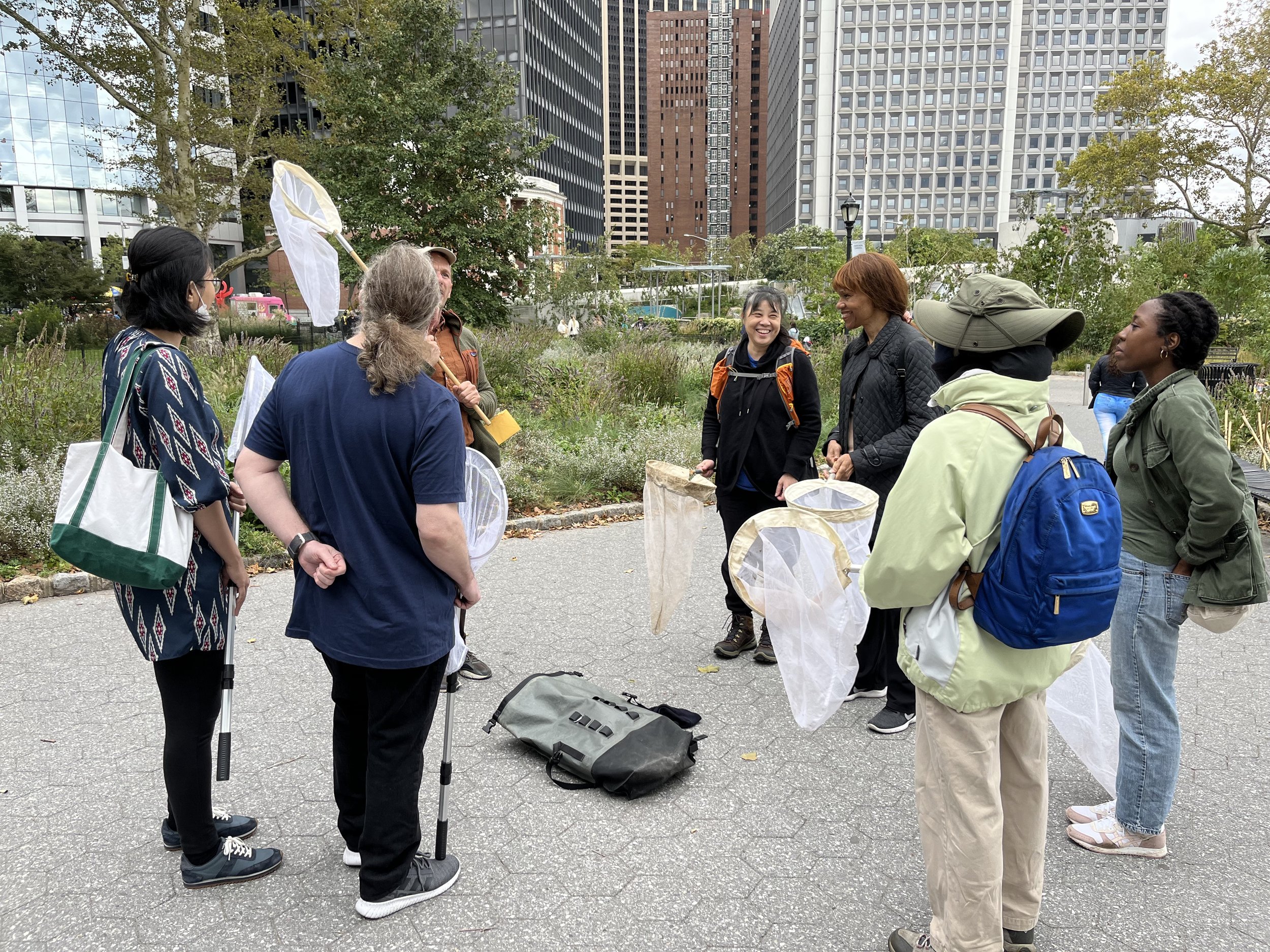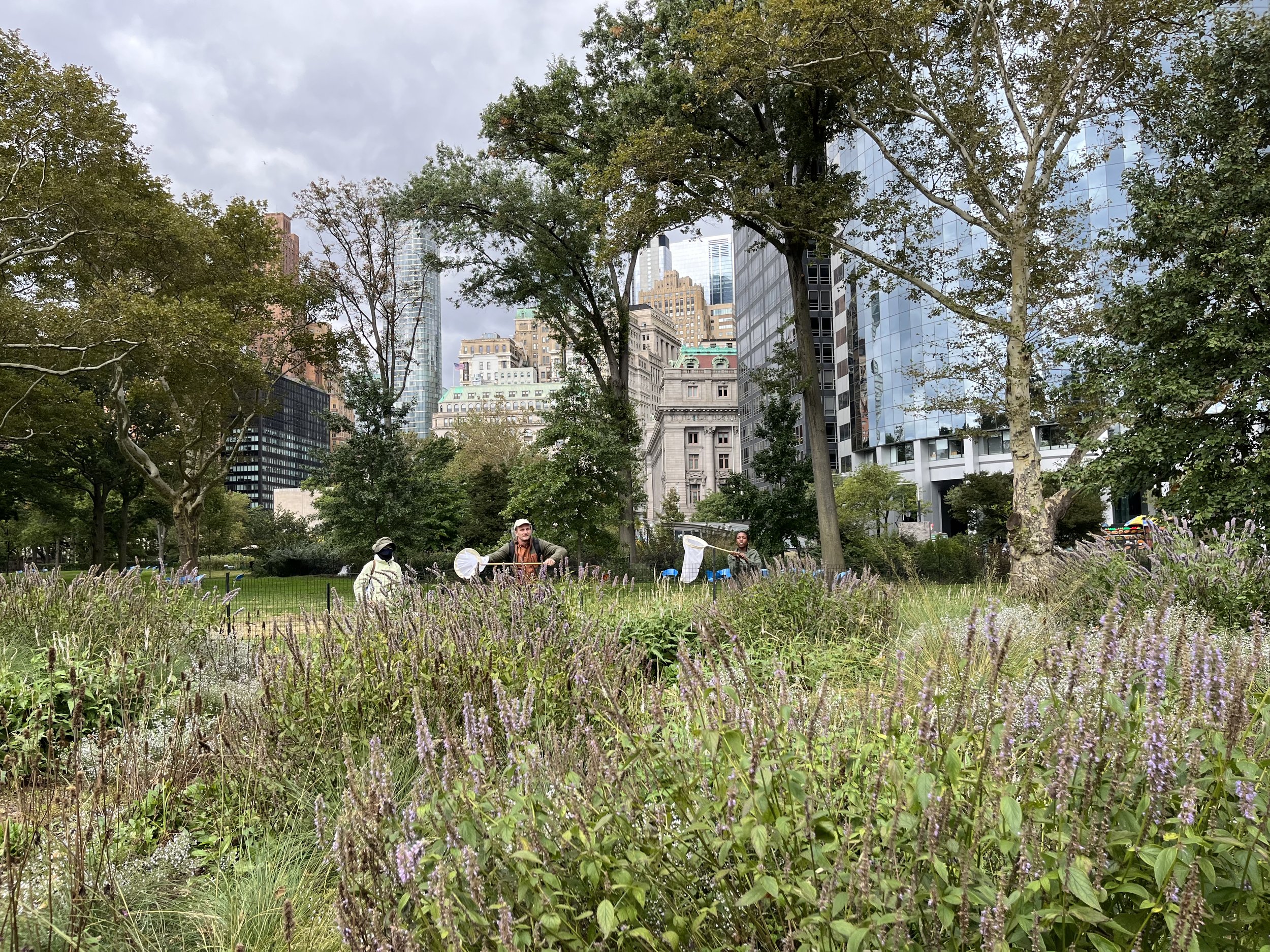On a lovely but cool October 8, MSNH members met at The Battery to learn more about one of the most spectacular animal migrations observed each year in North America – that of the monarch butterfly.
Every year, millions of monarch butterflies (Danaus plexippus) travel within one generation from as far north as Canada all the way to North Central Mexico where they overwinter high up in cool Conifer forests. Monarch butterflies use a combination of a sun-compass as well as the earth’s magnetic field to reach their overwintering grounds. Several additional adaptations have been found that help them on their journey: not only do migratory monarchs sport longer and narrower wings, but they are also intensely gregarious, and live much longer than their non-migratory conspecifics.
To further elucidate this radical solution by an insect to avoid freezing temperatures, Monarchwatch provided us with reflective stickers that are meant to be attached to the backside (ventral side) of their hindwings by citizen scientists like us. If these stickers are detected by one of the many volunteers of this project, the associated information provided by people who tagged the butterfly allows for the reconstruction of the migration route.
After a short demonstration, we were all equipped with a butterfly net and stickers. Off we went to hunt for monarchs feeding on the many native plants planted by The Battery Conservancy. In addition to these, the conservancy generously opened their doors to the The Battery Urban Farm where we could look for more monarchs and saw the wonderful produce grown in this highly urban area.
Given the cool weather of the previous weeks, monarch numbers were low and we were able to catch only two monarchs and tag them with the stickers. However, after the workshop participants have been able to tag numerous other monarchs on site. In addition, one of the volunteers who participated in the workshop visited in the week following and was able to tag at least a dozen different monarchs over the course of a few days. Regardless, we hope these made it to Mexico and wish them well for the remainder of their lives.
To view more photos from this event, please visit our gallery. We would like to thank Elise Morton (Fairleigh Dickinson University) for taking pictures of the event, and a special thanks to Adam Walker as well as two wonderful volunteers from the The Battery Conservancy for giving us access to this wonderful space. We encourage anyone interested to visit their numerous garden projects as well as to consider volunteering for them.
Related Links to this Event
The Battery Urban Farm
An article about monarch wing evolution by Hari Parzer, which was just accepted to the Journal Evolution and Development.
Dr. Harald Parzer is Vice President of The Metropolitan Society of Natural Historians and Associate Professor at Fairleigh Dickinson University. He was born and raised in Salzburg, Austria, where he developed a deep love for anything "zoology", going on to study biology at several universities, including the University of Salzburg, Austria; University of Hong Kong, China; and University of Wuerzburg, Germany. Eventually, he went to the University of Vienna, Austria where he received his M.S., studying the mating system of the soldier beetle Rhagonycha fulva. In addition to soldier beetles, Dr. Parzer worked on several other organism groups, including leaf cutting ants, bats, and apes. He left Austria in 2006 to pursue a Ph.D. at Indiana University, working on the evolution of dung beetle genitalia. After completion of his Ph.D. in Evolutionary Biology, he became professor at Fairleigh Dickinson University in Madison, New Jersey. In addition to teaching courses like Biological Diversity, Evolution, and Entomology, Dr. Parzer continues to conduct research with undergraduate students on a variety of topics, including butterfly wing evolution.



